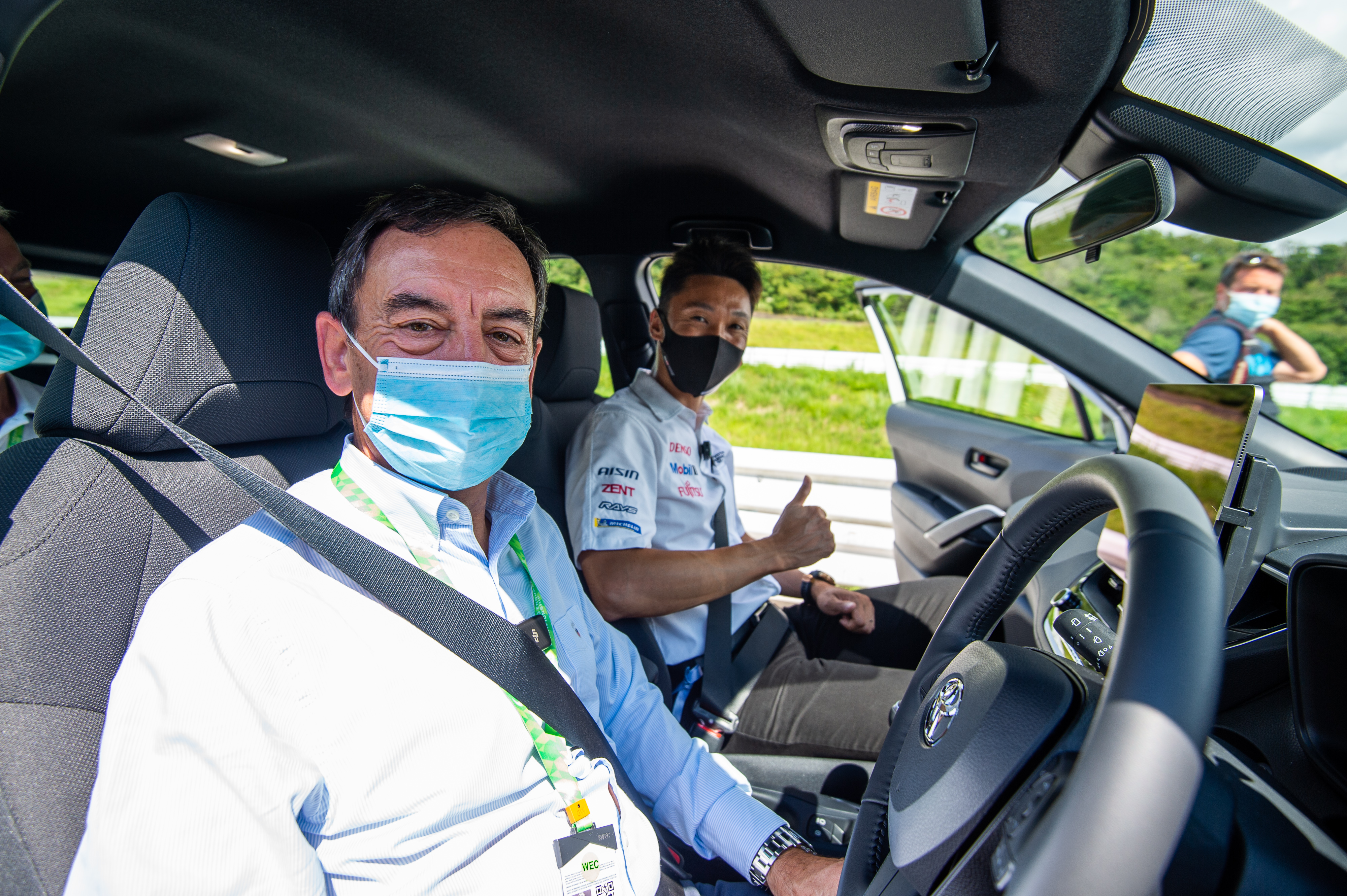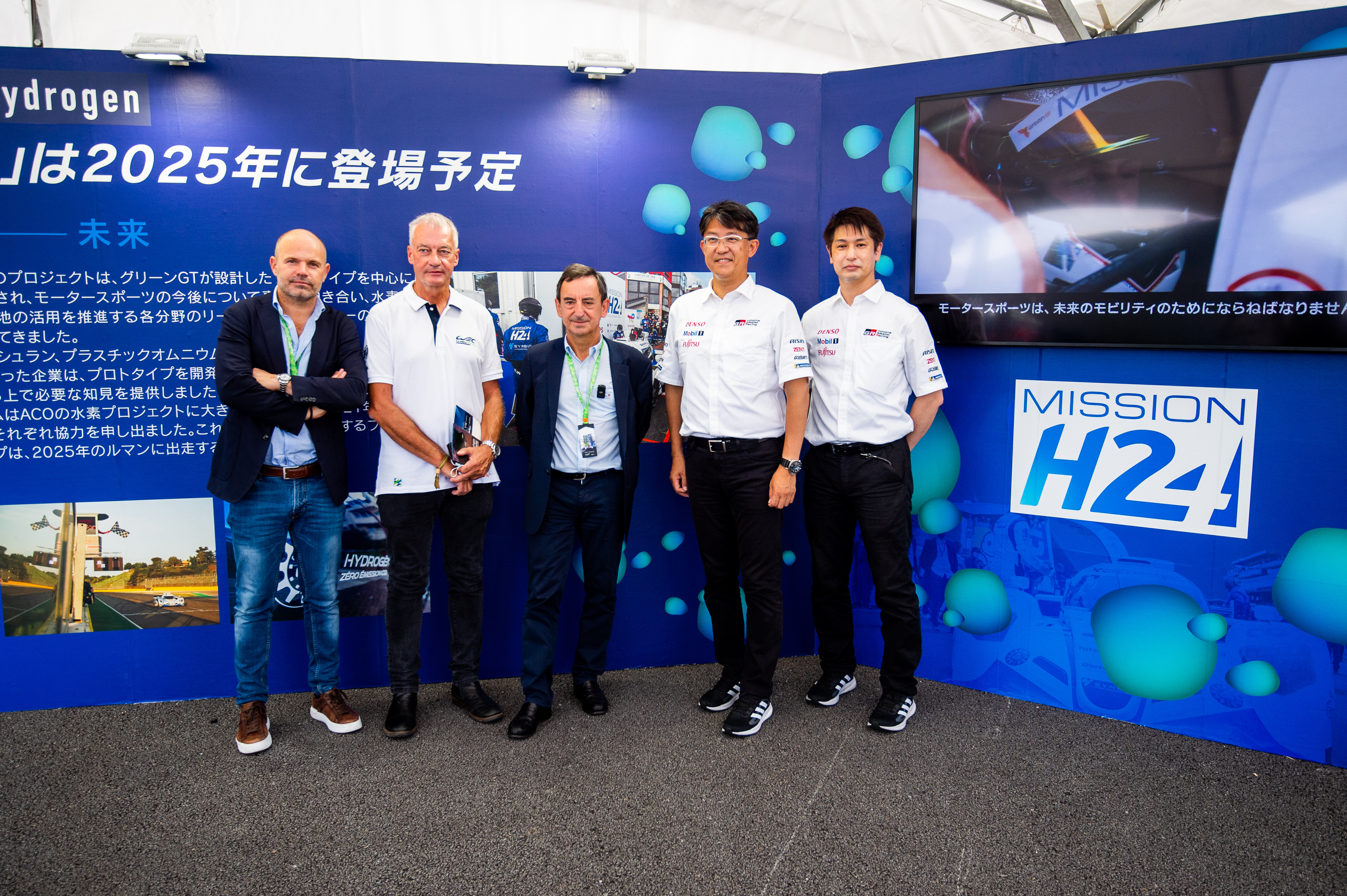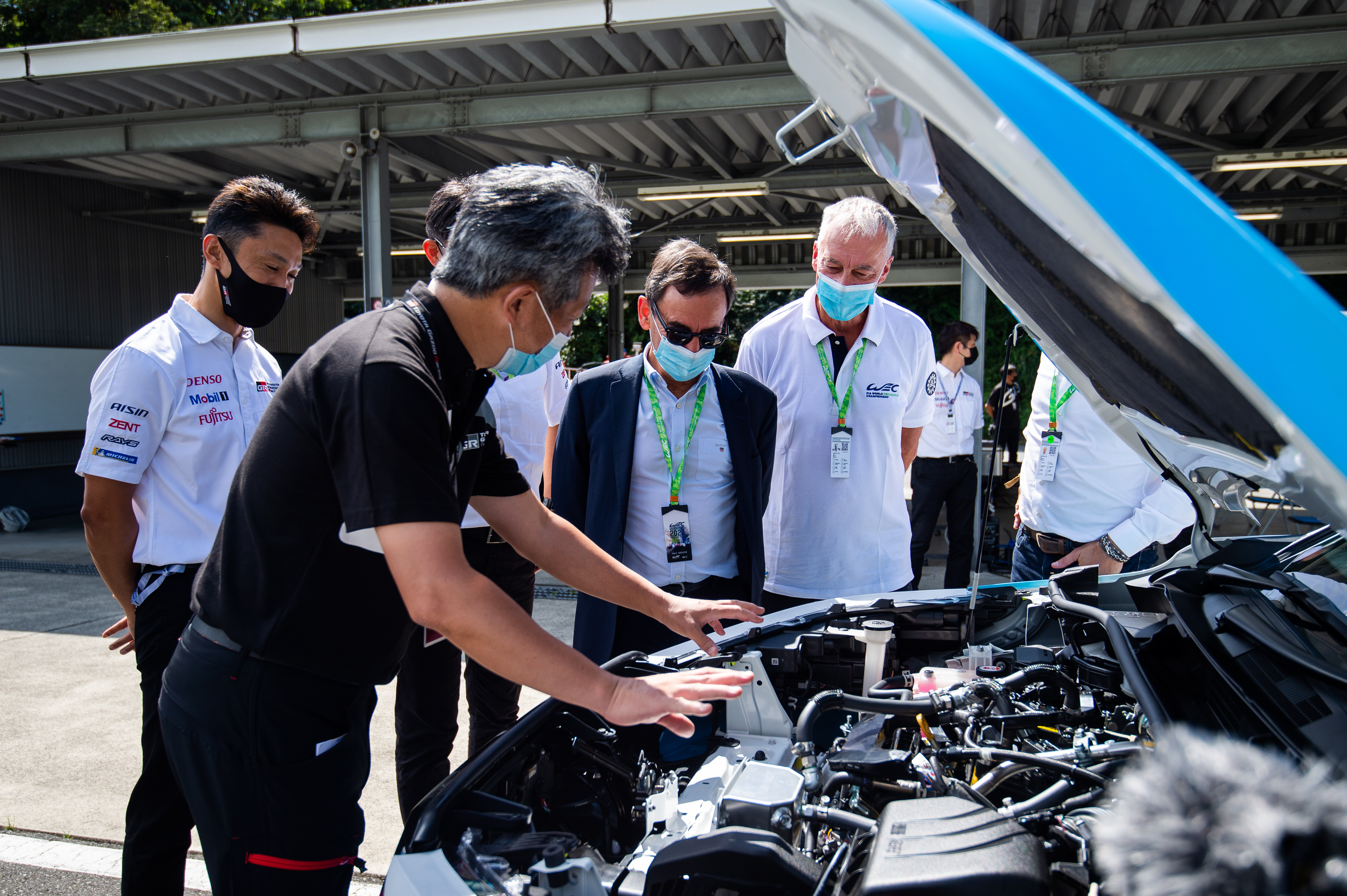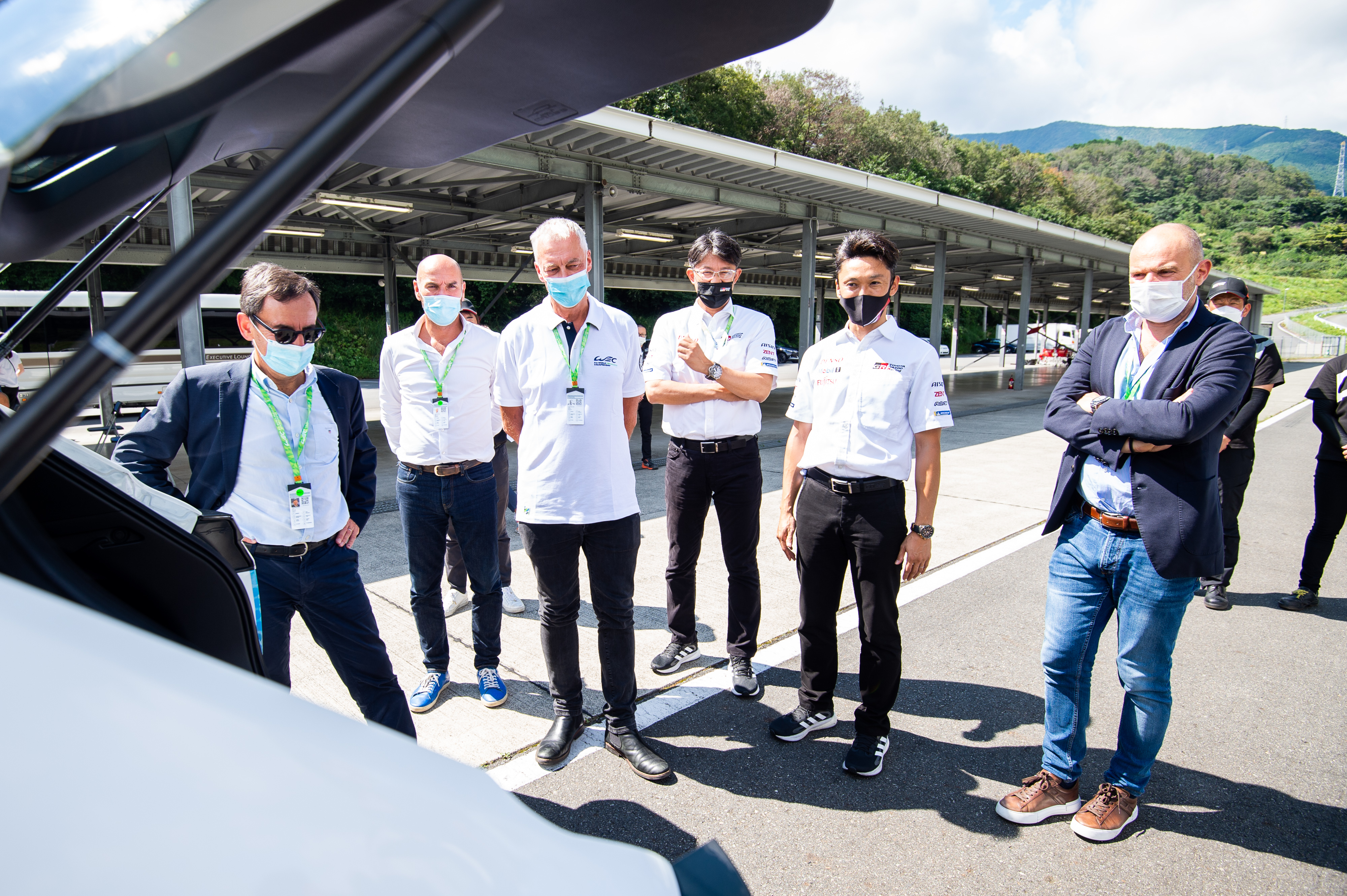Toyota’s Hydrogen potential as highlighted in Fuji
It’s internal combustion, but not as we know it…
In the build-up to last month’s 6 Hours of Fuji, FIA World Endurance Championship stalwart Toyota showcased one of many very interesting projects it is working on with hydrogen as the fuel.
Hydrogen has been harnessed through a number of means as manufacturers look to tackle climate change and provide methods of mass motion with less or no carbon creation.
Fuel cells instead of batteries as an energy store to power electric motors is one method which has been seen in cars such as the Toyota Mirai.
Toyota is also working with liquid hydrogen technology which provides a number of benefits over hydrogen in its gaseous form, not least the size of the storage tanks required.
It was a Hydrogen Internal Combustion Engine Vehicle (HICEV) seen in Fuji, with the car generating energy through the combustion of hydrogen, burning hydrogen directly as a fuel, much like a gasoline engine.
ACO President Pierre Fillon was lucky enough to get behind the wheel of a road-going Toyota Corolla Cross H2 Concept which the brand says is a step closer to the commercialization of the hydrogen internal combustion engine.

“I experienced first-hand Toyota's ambitious campaign to promote hydrogen,” said Fillon. “Like the ACO, Toyota is convinced that hydrogen can play a major part in the energy transition and the move towards zero emission mobility. The MissionH24 programme we are running with GreenGT is a great example of this and we look forward to further harnessing this technology in the future.”

HICEVs retain much of the performance that drivers are accustomed to, and even the sound from the exhaust is nearly identical to that of a gasoline-powered car, despite the main emission being water vapor.
Except for the combustion of trace amounts of engine oil during driving, hydrogen engines emit zero CO2 when in use. Since they burn hydrogen while intaking oxygen found in the air, as in the case with gasoline engines, a certain amount of NOx is created, but in general, they are cleaner than both HEVs and PHEVs.

The Toyota Corolla Cross H2 Concept showed what a future family car with an internal combustion engine that runs on hydrogen may look like.
Previously, Toyota had only revealed a race-spec Corolla — which it had raced in the Super Taikyu Series last year — and a prototype of the GR Yaris with a hydrogen combustion engine. The utilization of the G16E-GTS, the three-cylinder turbo with 1.6 l of the GR Yaris, is common to all of them,
“The FIA World Endurance Championship has facilitated many technological advancements by allowing new technology to be demonstrated in the heat of race battle,” said FIA WEC CEO Frédéric Lequien.

“Ultimately, the race track enables the technology to be proven, and be seen to be proven, to develop the technology for road-going applicability with an eager audience which has seen the technology showcased on the WEC race tracks around the world.”
The Corolla Cross H2 Concept is distinguished from the other two by the fact that its practicality has not been compromised.
Whereas the back seats of both the racing Corolla and the GR Yaris were removed to accommodate the hydrogen tanks required, because the Corolla Cross H2 is a larger SUV, the two hydrogen tanks are located under the cabin floor using the same technology as the Mirai, an electric car with a hydrogen fuel cell.
“The development of technology takes time, so it will take a little longer before hydrogen-powered cars become widespread. However, introducing this technology in motorsports first will help speed up development, and with energy problems and the future of energy still uncertain,” said pole-sitter for the ensuing 6 Hours of Fuji and #7 Toyota driver, Kamui Kobayashi. “I believe this is a worthwhile thing to do.”
.jpg)



